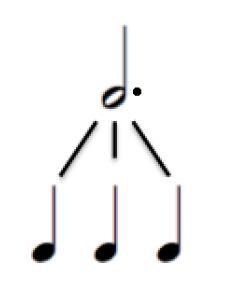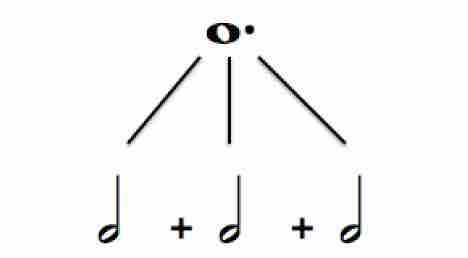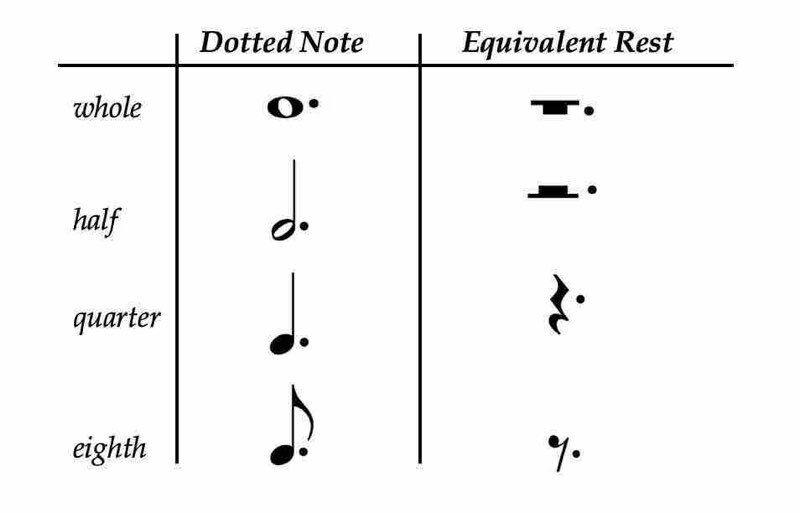Day 6: Adding Duration With The Rhythm Dot
With a dot placed directly to the right of a note head, the duration of that note increases by half its original value. Here’s an example. This is a dotted half note:
The half note alone is equal to 2 quarter notes. The dot is worth half of that: 1 quarter note. So, in total, the dotted half note is equal to 3 quarter notes
–two from the original half note and 1 from its dot.
The dotted half note is equal to three quarter notes
How about a dotted whole note?
We know the whole note is equal to 2 half notes. The dot adds half this original value, that is: one half note. So the dotted whole note is equal to three half notes (two from the whole note itself, and one from its dot). At the same time, of course, every half note is equal to 2 quarter notes each, so in total, the dotted whole note is also equal to 6 quarter notes.
The dotted whole note is equal to three half notes
Think about the rhythm dot just like the English word “half.” In the phrase “A year and a half”, the word “half” means six months. But in the phrase “A month and a half”, the word “half” now means only two weeks. The rhythm dot works exactly in the same way. Its exact value depends on what comes before it.
Let’s work out 2 more examples. The quarter note is equal to 2 eighth notes. The dot adds another eighth note (half the original). In total, the dotted quarter note is equal to three eighth notes.
The dotted quarter is equal to three eighth notes
Finally, let’s work out the dotted eighth note. The eighth note is equal to two sixteenth notes. The dot adds another sixteenth note because that’s half the original, and so in total, the dotted eighth note is worth three sixteenth notes.
The dotted eighth note is equal to three sixteenth notes
The rhythm dot applies exactly the same way to rests. A dotted whole rest, for example, is worth three half rests. And a dotted half rest is equal to three quarter rests.
Here is a table of dotted note values and their equivalent in rests.
Table of dotted notes and equivalent rests
Following is an example of a rhythm from Tchaikovsky’s Morning Prayer
from his Children’s Album Op. 39
. The dotted notes are important. They contribute to the overall musical character.
Here is that same rhythm with the pulse shown underneath. The rhythm on top is the original rhythm of the melody. The one below is the pulse outlining the three quarter beats per measure of three-four meter.
The Double Dot
Although its use is not as common as the single dot, the duration of a dotted note can be extended by the addition of a second dot. This second dot will be worth half the duration of the first dot.
A double dotted half note, for example is equal to a half note plus a quarter note plus an eighth note:
The double dotted half note










